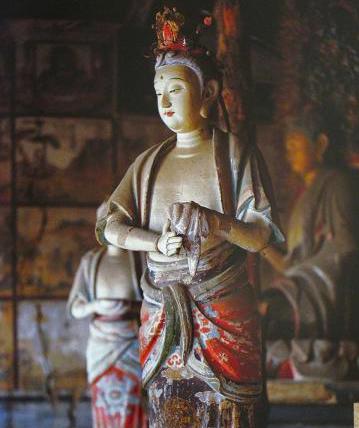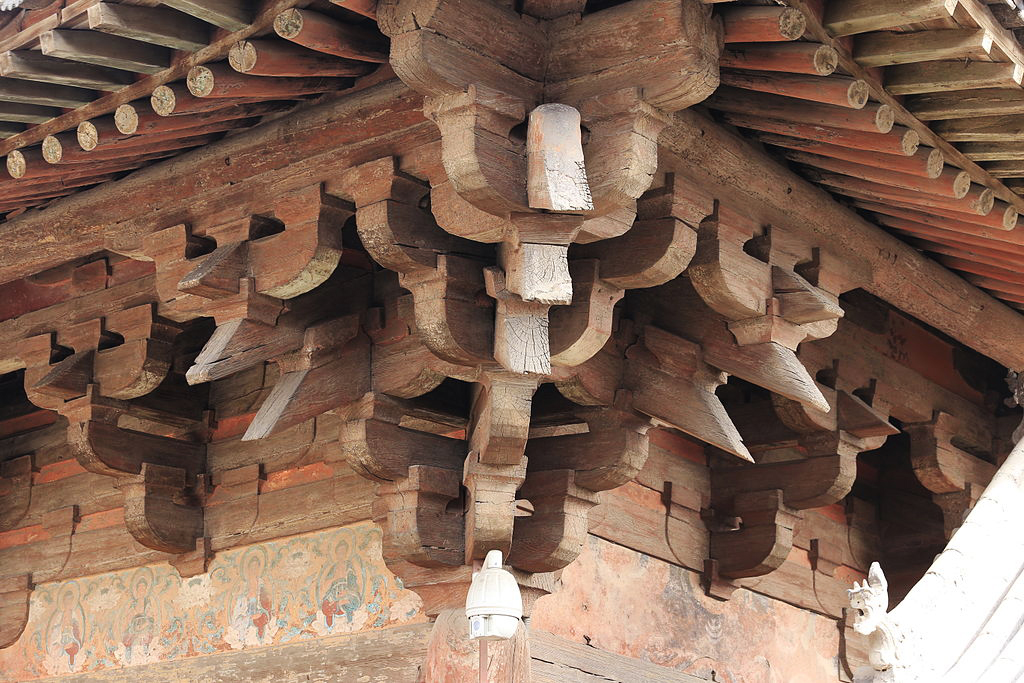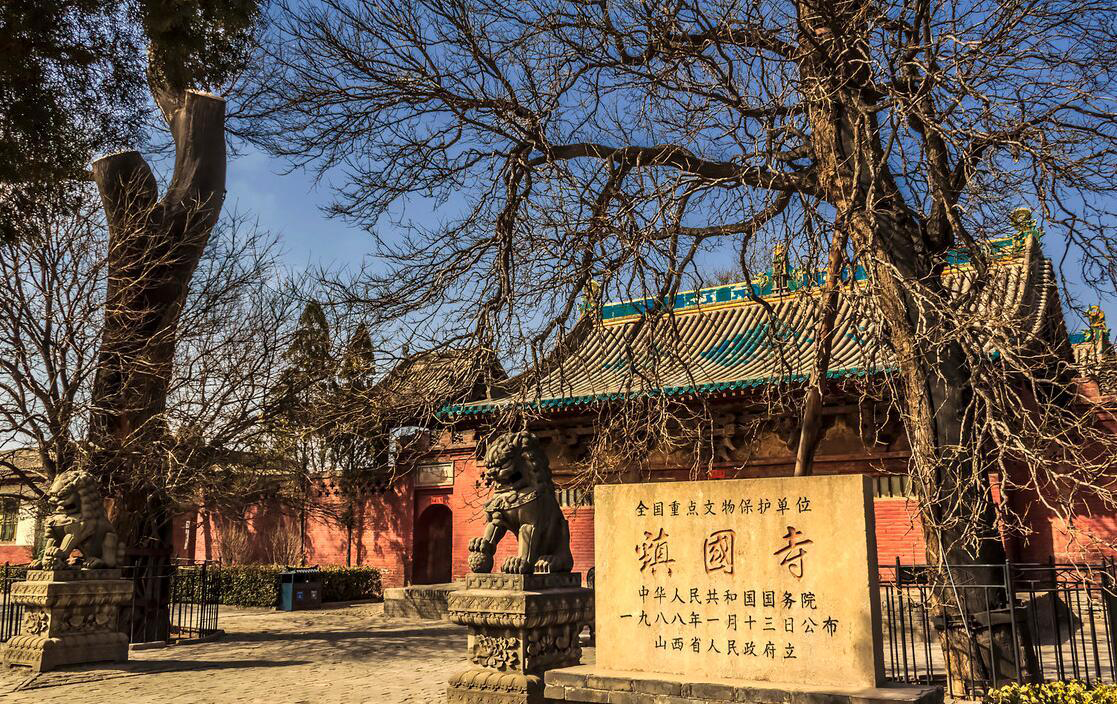
Located just 10 kilometres (6 mi) from the ancient city of Pingyao, Zhenguo Temple has a history that stretches back over 1,000 years. Its profound historical importance meant it was incorporated by UNESCO into the “Ancient City of Pingyao” World Heritage Site in 1997. Records suggest that the temple was originally established during the Northern Han Dynasty (951–979), since the “Wanfo” or “Ten-Thousand Buddha” Hall, its oldest surviving structure, was built in 963 AD. Constructed without the use of a single nail, this hall is a masterpiece of ancient architecture and is one of the three oldest wooden structures in China. So, if you ever need to knock on wood, this might be the best place to do it!
Within the hall itself, there are eleven sculptures that date all the way back to the Northern Han Dynasty. Outside of the Mogao Caves in Gansu province, they are the only examples of Buddhist sculpture in China dating back to this period. The main statue is that of Shakyamuni[1] Buddha, who is flanked by Bodhisattvas[2] and the Four Heavenly Kings of Buddhism. The Ten-Thousand Buddha Hall rests at the centre of the temple complex and is surrounded by a constellation of other halls, which were added periodically throughout the temple’s history.

At its southern end, the complex opens with Tianwang Hall, which acts as the temple’s gate and was originally built during the Yuan Dynasty (1271-1368). The hall is flanked by two towers, and contains statues of Guan Yu, a renowned military general from the Three Kingdoms Period (220-280), alongside statues of the Four Heavenly Kings. Its northernmost point is marked by Sanfo Hall, which was constructed during the Qing Dynasty (1644-1912). The name “Sanfo” literally translates to mean “Three Buddhas” and is named for the statues of the three forms of Shakyamuni that rest within its walls. The delicate murals that bedeck its walls similarly depict the life of Shakyamuni in vivid colour.

While this trio represents the three main halls of the complex, there are two smaller halls called Guanyin Hall and Dizang Hall on the eastern and western edges of the northern courtyard, which both date back to the Ming Dynasty (1368-1644). These are dedicated to Guanyin, the bodhisattva of mercy, and Dizang, the bodhisattva charged with aiding the deceased. Spanning many of the major dynasties, a walk through Zhenguo Temple’s halls is like taking a trip through Chinese history!
Notes:
[1] Shakyamuni: One of the titles of Gautama Buddha, the central figure and founder of the Buddhist faith. It is derived from the place named Sakya, which is where he was born.
[2] Bodhisattva: The term literally means “one whose goal is awakening”. It refers to a person who seeks enlightenment and is thus on the path to becoming a Buddha. It can be applied to anyone, from a newly inducted Buddhist to a veteran or “celestial” bodhisattva who has achieved supernatural powers through their training.